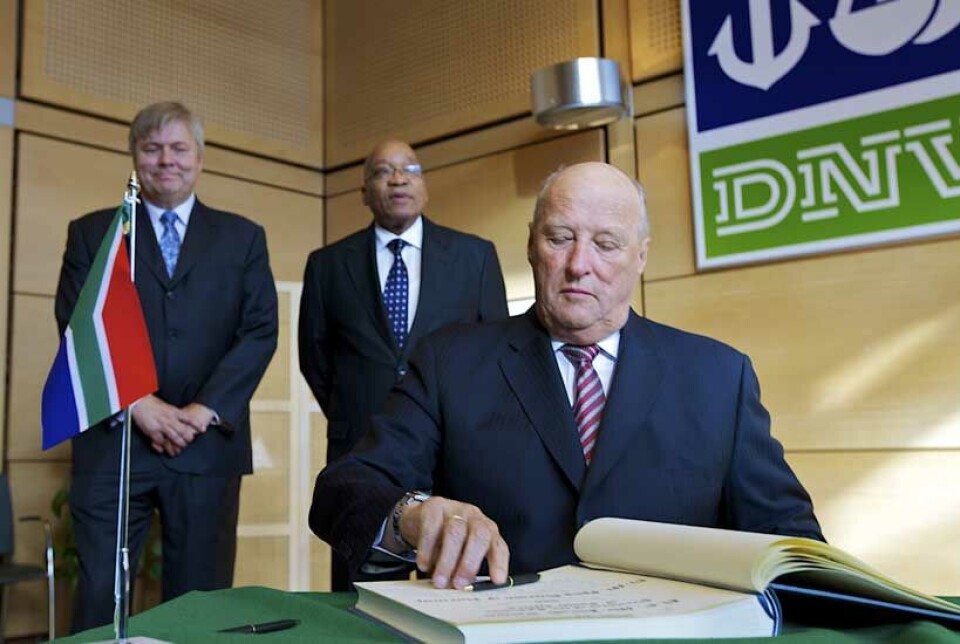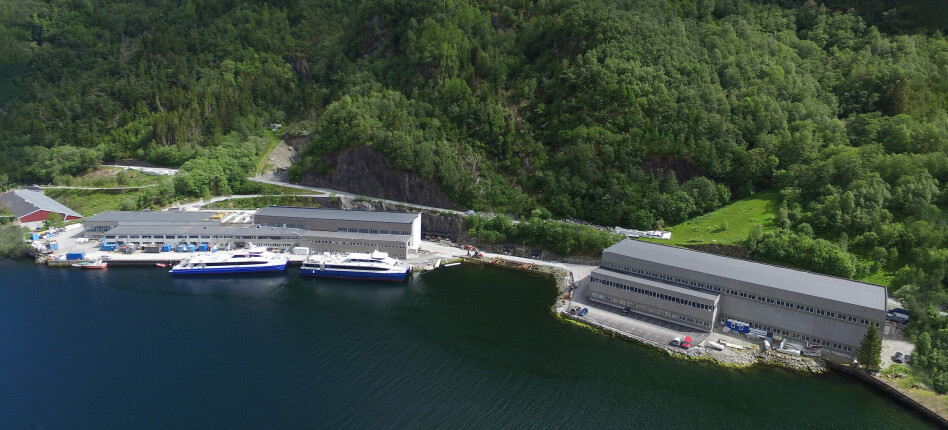
South Africa's President discuss carbon capture at DNV
The South African president, Jacob Zuma, the Norwegian King Harald, the Norwegian Minister of Oil and Gas, Ola Borten Moe and number of industry players met at DNV today to discuss cooperation and the future for carbon capture and storage (CCS). DNV encourages a close cooperation between stakeholders in order to realize CCS as an industrial opportunity.
Denne artikkelen er tre år eller eldre.
Photo:Nina Eirin Rangoy
“Developing CCS into a mature solution is a long term assignment which many countries and companies now have taken a great responsibility to handle. I am therefore glad to see that a number of industrial-scale CCS projects are already in operation or in development, and several of these are located in Norway and in continental Europe,” said CEO at DNV, Henrik O. Madsen, to the representatives from Norway and South Africa.
He continues in his speech, “However, though considerable technical developments have been achieved, challenges remain for a global deployment of CCS. The challenge is complex, but it looks promising. It is all about obtaining a sustainable interaction between technology developers, regulatory bodies, and financial institutions. And it is not at least about building trust amongst the public.
This is why DNV has taken the role in developing international guidelines and standards for the whole CO2 value chain; from capture, transport to safe storage of CO2. These have been developed through a collaborative approach with industry and regulators. After the launch early last year, the guidelines have been widely used in the industry, and the new European CCS directive is referring to DNV’s guidelines for CO2 transport and storage. Our aim is that many other countries use this compiled knowledge as basis for their own regulations. DNV has been chosen by the European Commission to facilitate the European Union’s knowledge sharing network, where experiences from the European CCS demonstration projects are captured.
In order to meet the 2 degrees Celsius climate target, the world needs thousands of CCS installations within 2050 and new technology is being developed to meet this need. It is important that these technologies are properly qualified – meaning that stakeholders are ensured they work as intended and that that the desired reductions of CO2 emissions will be achieved safely and reliably. DNV has a long history in qualifying technology in emerging industries and our recognised approach has already qualified new and promising CCS technologies.
Whilst some technical challenges remain, DNV experiences that the main barriers to wide scale CCS deployment lie in the regulatory and financial gaps. These must be closed to enable commercial operations, and a significant contribution will be an inclusion of CCS in the Clean Development Mechanism regime – also named CDM.
The upcoming COP17 meeting in December in Durban will be of key importance to the global development of CCS. Here, the decision of potentially including CCS as a part of the CDM regime will be taken. We are in full support of this and a continuation of the CDM. Cooperation is the key. In order to realise the potential CCS have on mitigating climate change, all players; technology developers, governments and financial institutions, must collaborate towards the same goal.”
Speakers in the meeting:
• Mr. Henrik O. Madsen, CEO of DNV
• Ola Borten Moe by Minister of Oil and Energy in Norway
• A South African perspective by SANI
• Mr Bjørn Erik Haugan, CEO of GASNOVA
• Ms Unni Steinsmo, President & CEO of SINTEF
• Ms Liv Monica Stubholt, CEO of Aker Clean Carbon
• Mr Helge Lund, CEO of STATOIL











